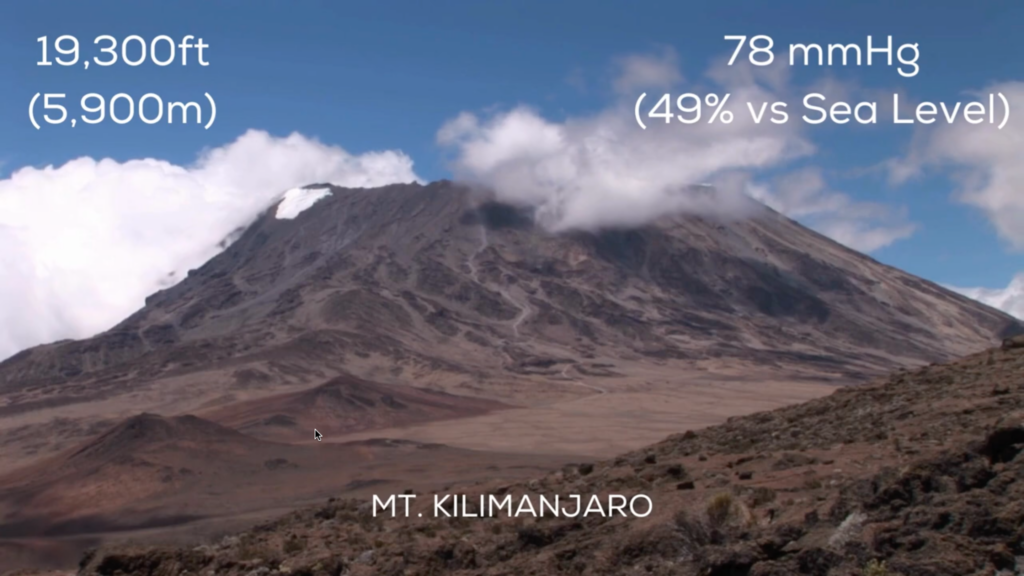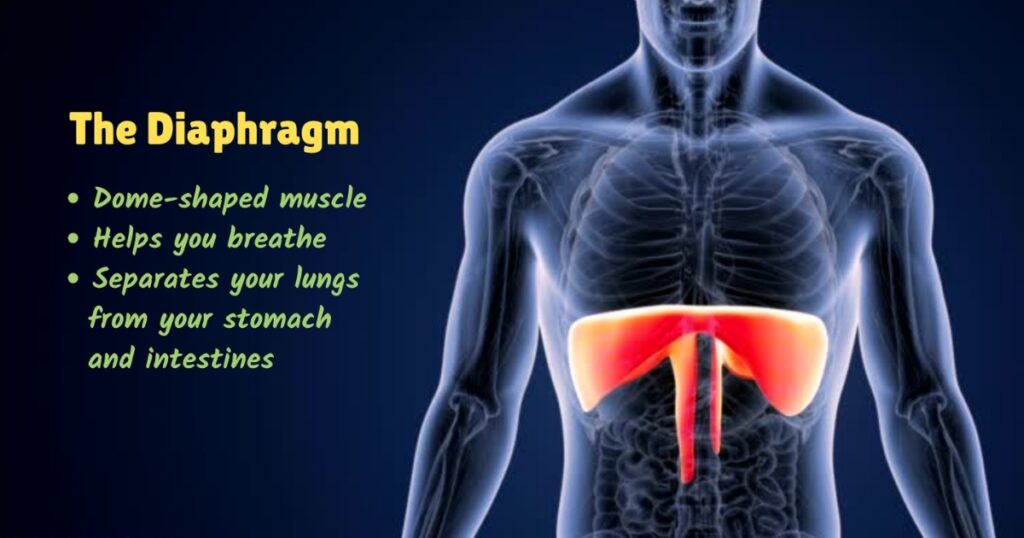How to Train for High Altitude....from Sea Level
Have you ever wondered how to train for altitude if you live at or near sea level?
The altitude you’ll be facing in that upcoming trek in the mountains, trail running vacation, ski trip, mountain climb, or high altitude endurance race you’ve signed up for is often a major setback. Especially if you have limited time to acclimatize your body for the higher elevation.
Even if you have access to a gym with an altitude simulation room and specialized equipment, this can be price-prohibitive, resource-intensive, or unnatural. In this article, we’re going to outline a way for you to train for high altitude completely naturally, using nothing but your own body and breath.
Introducing Recal’s High Altitude Breathwork Training Program
With our background in breathwork-based coaching, we’ve designed a training program specifically to address this situation: one where you’re looking for a way to train for altitude….from anywhere.
Our solution? A 5-week High Altitude Breathwork Training program.
Take a look at Anthony, our founder and head coach, describing the training here:
5-week Program for How to Train for High Altitude
In the 5-week breathwork training course, you’ll start by doing a series of breath assessments to gauge where you’re at with your own breathing, both mechanically and biochemically. These include a ‘Body Oxygen Level Test,’ a ‘Carbon Dioxide Tolerance Test,’ and a ‘Maximum Breathlessness Test.’ Don’t worry, you don’t need to schedule a visit to the doctor for these assessments.
Once you have the assessments in-hand, you’ll be introduced and guided through a set of exercises focused on getting you ready for the altitude. We tackle this problem from three different angles:
- Improving Your Breathing Efficiency
- Making Physiological Adaptations
- Strengthening Your Respiratory Muscles
Below, we’ll dive deeper into each one.
1. Improve Your Breathing Efficiency
The first critical area we focus on is improving your own breath efficiency. In other words, you might need to unlearn some of the dysfunctional breathing habits in order to make space to re-learn more efficient ones. That way, when the air gets thinner at altitude, you’ll have the ability to more efficiently oxygenate your body and prevent severe levels of hypoxia. Our goal is to enable you to keep your breathing rate slow and controlled, enhancing blood oxygenation. We live by the moniker Nose – Slow – and Low (NSL). We want you breathing in a mechanically optimal way, as well as utilizing your full lung capacity.
2. Make Physiological Adaptations
Over the 5 weeks, you will practice exercises designed to make physiological adaptations in your body. Specifically, you’ll be focusing on two key adaptations:
- Decrease your Chemoreceptor Sensitivity to Carbon Dioxide (i.e. Increase CO2 Tolerance)
By recalibrating these chemoreceptors, you will feel less breathless at altitude, which will enable you to breathe in a more efficient (Nose, Slow, and Low) breathing pattern.
Plus, nobody likes that strong, panicky feeling of breathlessness. Let’s enable you to enjoy your time on the mountain more.
- Create New Red Blood Cells
Through a combination of something called intermittent hypoxic, hypercapnic training (low oxygen, high CO2) as well as hypoxic, hypocapnic (low oxygen, low CO2) breath-hold exercises, you’ll increase the hemoglobin concentration of your blood. These high altitude simulation breathing exercises have been proven through published scientific research to increase hemoglobin, or red blood cells, concentration in your body, resulting in a higher total oxygen uptake capacity, or VO2max.
Think about it: who wouldn’t want to arrive at Day 1 on the mountain with a higher red blood cell count and VO2max!? In our experience with this exact training for our own mountain endeavors, we’re sure glad we did.
3. Strengthen Your Respiratory Muscles
Lastly, the third critical way that breathwork training gets you ready to take on high altitude is by strengthening your respiratory muscles, in particular your diaphragm (the muscle at the base of your lungs, known as the breathing motor) and intercostal muscles (the muscles in between each rib bone in your ribcage).
Understanding the Importance of Respiratory Muscle Strength
To explain why this is important, you have to consider how much thinner the air is at altitude. For example, the density, or partial pressure, of oxygen in the air at sea level is about 160 millimeters of mercury (that’s the unit of measurement you use for pressure). In stark contrast, if you’re planning a trek to the top of Mt. Kilimanjaro, the highest peak in Africa at about 19,300 feet (5,900 meters), the partial pressure of oxygen is less than half of that at sea level, at only 78 mmHg. That’s just 49% of the oxygen pressure available at sea level!

Because of this major pressure difference, your respiratory muscles have to work harder to get air into the lungs. You need to work hard to move the air from that lower pressure space (the air outside your lungs) into your lungs. Without conditioning your diaphragm and intercostal muscles, these muscles might fatigue. And if they fatigue, you’ll start to pull from other muscle groups (like your chest or shoulders) to compensate. This will fatigue those muscles early, and the overall economy of your movement through the mountain will decrease. You’ll be expending more energy than needed to simply… breathe.
By strengthening your respiratory muscles, you can increase your breathing economy and enable these muscles to do exactly what they’re designed to do.
Building Mental Resilience
Along the way through the training, one of the ‘intended’ consequences of breathwork, one that you may not have considered, is that you will build mental fortitude necessary to take on high altitude environments. This training program isn’t just about making physical adaptations; it’s also all about creating a strong, resilient mindset. High altitude has a strong, negative effect on cognitive performance and mood states; the exercises in Recal’s breathwork training program are designed to enable you to maintain high mental acuity and cognitive function. This isn’t just about performance; it is also about your safety. Let’s make this endeavor a safe one for you and everyone else in your climbing party.
To learn all the impacts of what altitude does to your body, you can read our article here, or view the YouTube video.
Recap of the Program
Alright, let’s recap. Our goal is to enable you to:
- Improve the efficiency of your breathing to better oxygenate your body.
- Make key adaptations in your body through high altitude simulation breathing exercises.
- Strengthen your respiratory muscles so that you can better handle the lower density air at altitude.
- Build Mental Resilience so that when doubt and mental fog sets in, you have the fortitude not just to press on, but make the right decision every step of your journey.
Cautionary Note: Do Not Skip Acclimatization
- Gradual Ascent: Ascending slowly allows your body time to adjust.
- Hydration and Nutrition: Staying well-hydrated and maintaining a high-carbohydrate diet fuels your body’s energy needs.
- Hike High, Sleep Low: Hiking to higher altitudes during the day and descending to sleep at lower altitudes helps your body adapt.
Conclusion: There's Now a Better Way to Train for Altitude
Why not give yourself the benefits of proper breathing habits and key adaptations that enable you to oxygenate your body better on the mountain? This will not only increase your performance and enjoyment of your endeavor but also increase the chances of your safety along the way.
So, breathe easy, friends. There’s now a better way to prepare for the challenges that high altitude presents, and that’s with the 5-week High Altitude Breathwork Training course from Recal.
Once again, we are Recal, and we wish you the best of luck in your upcoming adventures.
See you on the mountain soon!
~ Message from Recal ~
Thanks for stopping by our blog. Here at Recal, we offer breathwork-based coaching to help you prepare for life’s greatest endeavors.
The latest program we offer is High Altitude Breathwork Training to get you ready for the mountain, even if you live at sea level. We also created Guidebook to use as a daily journaling tool; it has helped leaders around the world live more focused and fulfilling lives.
If you’re curious about our Guides, click the links below to submit your information and receive a free digital copy:
We also have a strategic partnership with Oxygen Advantage and use their products (like mouth tape for sleep and SportsMask for altitude training) to help our community become better leaders through breathwork training and proper breathing habits. You can view their online breath courses and products by clicking here.
We stand by the things that we offer and promote – and proudly use them ourselves.
If you have any questions, we’re here to help: email us at hi@recaltravel.com.

